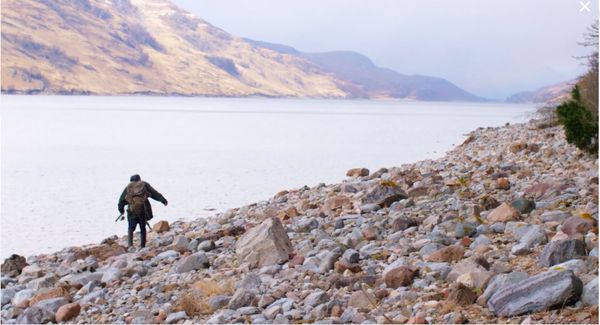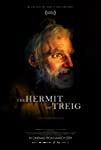Eye For Film >> Movies >> The Hermit Of Treig (2022) Film Review
The Hermit Of Treig
Reviewed by: Jennie Kermode

“You must not stop. And that’s always in my mind: keep going,” says Ken Smith. If you stop, he warns, you will die. It’s a fine metaphor but it’s also a very practical piece of advice. As a young man, travelling through Canada, Ken wandered off the road on impulse one day and spent two years in the wilds of the Yukon, his wandering coming to an end only when he reached the ocean. Now he lives in the hills above Kinlochleven. Fall asleep without proper shelter in such places, at least in the colder months of the year, and one won’t wake up again.
Ken keeps going through life. He’s not averse to engaging with other people, and easily engages in conversation (as well as providing all of the narration here). He just doesn’t want to live in society. In his youth, he was violently assaulted by strangers; just when he thought he was recovering, he relapsed and fell into a coma. From then on, he says, he never wanted to live on other people’s terms ever again.

Ken loves to take photographs. They are, he says, an aide to memory, and since that assault his memory has never been quite right. He took a photograph of Lizzie MacKenzie when they first met, but it would be seven years before he would agree to let her make a film about him. He seems very much a part of the creative process, but there are times when it slips away from him. Partway through, he suffers a stroke which makes his memory worse and causes damage to his eyes. He finds the colours he sees very pretty. Beauty has always been important to him. One night, by torchlight, he caresses a lone yellow rose. The next day, he shows it to MacKenzie again, tell the same story, the events of the night already lost to him.
How does one handle living alone when in fragile health? MacKenzie finds it impossible to be wholly objective here, but Ken is not afraid. He points out that everyone dies sooner or later. When it happens, it happens. In the meantime, he is busy brewing gallons and gallons of wine so that when he passes, everyone who knows him can get drunk on it and have a party.
Living in a cabin which he has built for himself, Ken, hunts, gathers, fishes and does a bit of gardening. His impact on the world around him is minimal. Its impact on him has been considerable. His hands and face are gnarled like an old tree. His warm woollen clothes form a sort of natural camouflage. He’s utterly at ease in his wild, hard land, alert to all its small changes, still dazzled by its beauty. Despite their injured state, his big, bright eyes react quickly, like a wild animal’s. He doesn’t pretend to any great wisdom, but he is utterly at easy with his surroundings, his mortality, the changing state of things.
MacKenzie scores her film with traditional highland melodies, but often there is nothing to be heard beyond nature’s soundscape, wind over water and through trees. Light bounces up brightly from the surface of the loch. The mountains frame the world. Nobody comes up here unless they have come to check on Ken. He never seems lonely or bored, and MacKenzie’s film makes it easy to understand why. Up here, life never stops.
Reviewed on: 05 Mar 2022
















